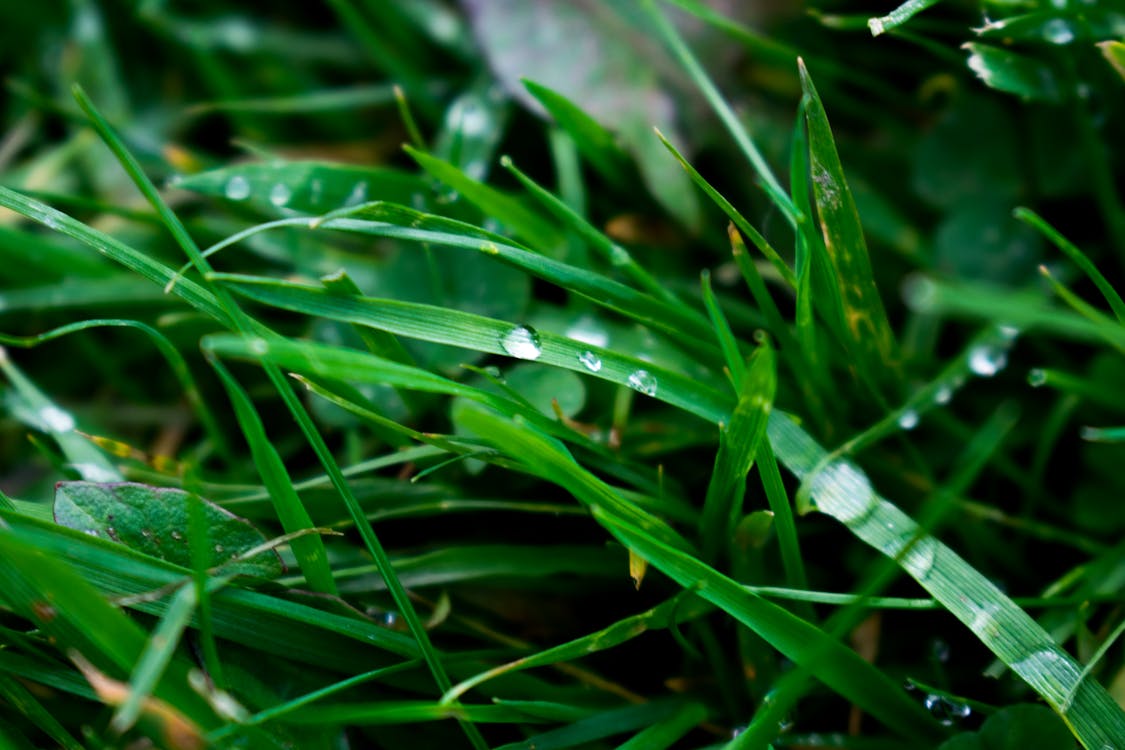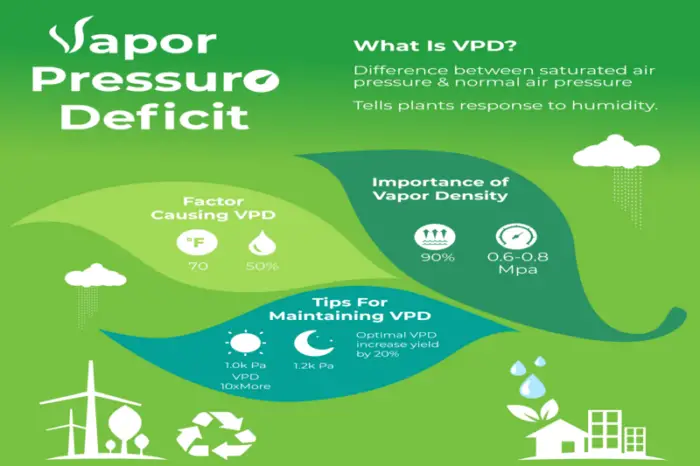Greenhouses and grow rooms have witnessed a tremendous surge in popularity in the last couple of years. That’s primarily because they allow farmers to stabilize the growing environment and mitigate the common causes of crop failure observed in outdoor cultivation.
But contrary to what many aspiring farmers think, greenhouses also have challenges of their own. Certain parameters must be achieved to be assured of healthy plant growth and optimal yields.
This article focuses on one of the commonly overlooked factors that affect greenhouses – vapor pressure deficit. Read below to uncover how this factor influences plant growth, how to measure it, and everything in between.

What Is Vapor Pressure Deficit?
Vapor pressure deficit, more commonly abbreviated as VPD, measures the ambient amount of water vapor contained in a given volume of air relative to the maximum amount of water vapor that air can hold when saturated. More simply put, VPD is a measure of the drying power of the air.
Now, VPD may be a foreign term to many farmers. However, it’s one of the most critical environmental factors for healthy plant growth and development. Maintaining the ideal VPD levels can proactively prevent crop diseases and regulate feeding parameters like watering and fertilization.
As with other environmental aspects, there are certain pieces of equipment designed exclusively for measuring the ambient vapor pressure deficit. An HVAC system?is one of the effective methods to control temperature, humidity, and air ventilation, which are key factors in determining an appropriate VPD.?
Altaqua is a household name in the supply of high-end HVAC systems. The company deals in equipment designed exclusively for farmers who wish to maintain the ideal temperature and humidity levels for the optimal growth of their crops.
Difference between VPD and Relative Humidity
You may have encountered some publications interchangeably using the terms ‘vapor pressure deficit’ and ‘relative humidity.’ However, these words do not denote the same thing.
Relative humidity measures the amount of moisture in the air at a particular temperature compared to the maximum amount of moisture that air can hold at the same temperature. On the other hand, vapor pressure deficit measures the difference between the maximum water vapor in saturated air and the amount of vapor the air currently holds in terms of pressure.

How Does VPD Affect Plant Growth?
Vapor pressure deficit is a critical aspect during a plant’s growth phase. As with other environmental factors, excess and insufficient VPD levels can be detrimental to the health of your crops. Vapor pressure deficit is especially a key factor in transpiration.
Transpiration is the process of pulling moisture from plant roots by combining transpirational pull and capillary force. The moisture moves through the main vascular tissues in plants – xylem and phloem – before coming out via particular spores in the leaves known as stomata. The ambient vapor pressure levels can significantly impact the transpiration rate.
If the VPD is too high, it can result in transpiration stress. However, plants are intelligent organisms that have adapted numerous effective ways to respond to adverse fluctuations in specific environmental factors.
Instead of your crops transpiring faster to offset the high VPD levels, they will close their stomata. This is a physiological response to prevent the plants from losing excess water.
But while plants may close their stomata to minimize moisture loss, the phenomenon can trigger unintended adverse consequences.
Most notably, stomata closure reduces the cooling effects plants usually enjoy when they get rid of excess water. Besides, a closed stoma diminishes the efficiency of gaseous exchange, which also occurs through the very stomata. It implies that your crops will absorb minimal carbon dioxide for photosynthesis and minimal oxygen for respiration. The inefficiency of both photosynthesis and respiration can impede the rate of energy production and other benefits that your crops derive from both processes. Without urgent mitigation, the plants will begin to wilt and eventually die.
On the other end of the spectrum, a low vapor pressure deficit means the atmosphere is very saturated with moisture. In this case, your crops don’t have to close their stomata to counteract the VPD-induced evaporative moisture loss. That should sound like an excellent thing to do.
However, very low VPD levels increase the risks of water vapor settling on the leaf surface, leading to mold and mildew growth. This could cause stomatal blockage, further slowing down your plant’s metabolism. And here’s where it gets worse. Note that there’s already a significant amount of moisture being drawn from the roots up the leaves. Sadly, this moisture cannot escape into the atmosphere due to the water-clogged leaves.
Slow metabolism translates to slow nutrient absorption. Ultimately, it can impede development and affect your crops’ yield volume.
The fact that low VPD levels resonate with excess ambient humidity means that your plants are also susceptible to diseases. Fungal infections are particularly a huge crop problem associated with low VPD levels.

How to Calculate Vapor Pressure Deficit
You need two crucial variables to calculate the ambient vapor pressure deficit. They include the saturated vapor pressure and the actual vapor pressure.
The formula is (VPsat – VPair), whereby VPsat is the saturated vapor pressure, and VPair is the actual vapor pressure. The answer is commonly expressed in pounds per square inch (psi) or kilopascal (kPa).
What Factors Influence Changes In VPD?
No environmental aspect operates in isolation, and VPD is no exception. The ambient vapor pressure deficit in plants is influenced primarily by changes in humidity and temperature.
Small temperature increases can raise the vapor pressure deficit dramatically. This can consequently increase the dryness of the surrounding air, triggering a range of adverse effects in plants. A slight decrease in temperature can also cause a disproportionate drop in VPD. Therefore, it’s easy to see why keeping the temperature within optimal conditions is just as important in promoting healthy plant growth.
When it comes to humidity and VPD, the relationship is inverse.
Higher vapor pressure deficit levels mean the air can hold more moisture before becoming saturated. In other words, high VPD translates to low relative humidity. On the other hand, lower VPD means the air is closer to saturation. Therefore, the air’s relative humidity is already quite high.

Wrap Up
Although it usually doesn’t receive considerable attention, vapor pressure deficit is an essential environmental aspect that can affect plant growth significantly. Therefore, always aim for the ideal VPD levels throughout your crops’ growth stages, anything from 0.6 kPa to 1.5 kPa.


